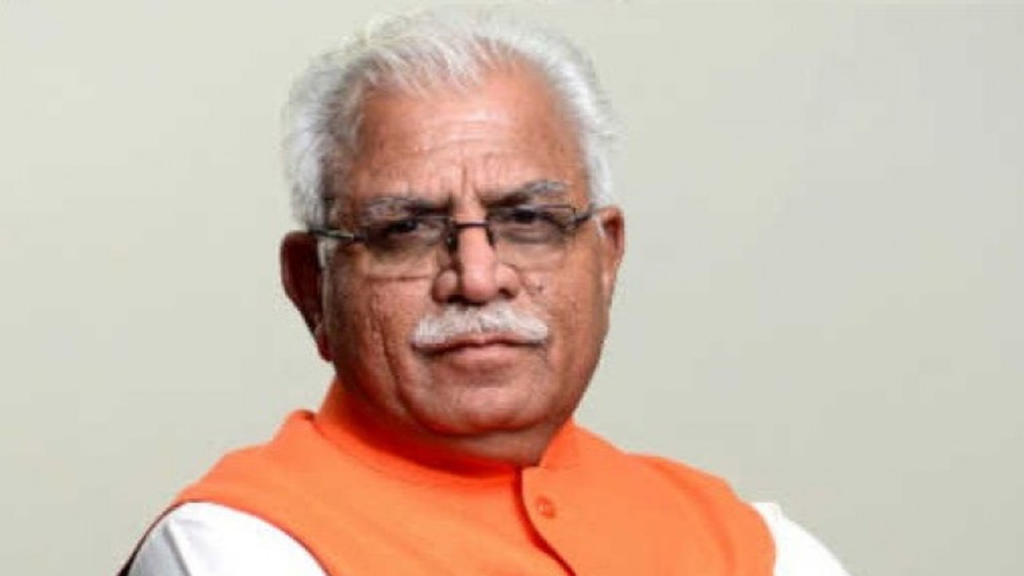According to the figures posted in a tweet by Haryana CM Manohar Lal Khattar, the state has seen a massive improvement as far as sex ratio is concerned. CM Khattar recently tweeted about Haryana’s progress in the fight against female foeticide and infanticide. He tweeted, “When we started with the ‘beti bachao,beti padhao’ mission, sex ratio in the state was 871 females per 1000 males, however after efforts of the society, institutions and government officials, today the sex ratio has improved to 933 females per 1000 males. This is a matter of pride for the state.”
जब हमने 'बेटी बचाओ बेटी पढ़ाओ' अभियान चलाया तब प्रदेश में लिंगानुपात की संख्या 1000 लड़कों पर मात्र 871 लड़कियां थी लेकिन हमने समाज, संस्थाओं, सरकारी अधिकारियों के साथ मिलकर काम करते हुए आज 933 के आंकड़े तक पहुंच गए हैं। यह प्रदेश के लिए गर्व की बात है।
— Manohar Lal (मोदी का परिवार) (@mlkhattar) June 12, 2019
Haryana’s journey from being a state with a skewed sex ratio to being on a firm path towards promoting health and well being of the girl child has surely been a long and victorious one. The north-western state has come a long way ahead, in the 2011 Census, Haryana’s child sex ratio was a shameful 1000:834 and the figure was even worse in the 2001 Census where the child sex ratio was 1000:819. Haryana due to these skewed realities has often been branded as being oppressive towards females, offering them little opportunities in education and employment; however, the steps taken by the state government combined with the efforts of the society have surely worked towards changing that perception about Haryana.
From distributing free gift vouchers to oath certificates to the public, the Haryana government has adopted innovative campaigns to promote the cause of the girl child and combat the gender imbalance in the state. The Khattar government’s approach to tackling this serious issue has been a well thought out one with mainly two main dimensions to the efforts, Firstly the focus has been on awareness programs which included several programs under the ‘Beta bachao, Beti padhao’ campaign.
The awareness campaigns included initiatives like organising ceremonies to celebrate birth of girl child at health institutions and villages, unfurling of National Flag by educated girls on Republic Day and Independence Day celebrations, honouring parents of girl child at village level celebrations, observing ‘Female Foeticide Conservation Day’, signature campaign and oath ceremonies against female foeticide in education institutions and government offices, cash award for villages successful in improving skewed sex ratio, organising baby shows, prabhat pheries, celebrating lohri of girl child, appointing girl ambassadors and mascots to create awareness, to name a few.
Secondly, the government has been focusing on strengthening the legislation and enforcing it effectively in efforts to check female foeticide and infanticide. Under the Pre-Conception and Pre-Natal Diagnostic Techniques (PC-PNDT) Act and The Medical Termination of Pregnancy (MTP) Act the Haryana government has filed about 584 first information reports (FIRs) which is more than any other state in India in the period since January 22, 2015, when PM Narendra Modi had launched Centre’s Beti Bachao Beti Padhao (BBBP) programme from Panipat, Haryana.
Over the past few years more than 1000 unethical doctors, untrained health workers, ultrasound technicians and operation theatre assistants, touts, even patients and their family members, have been arrested and booked. Under Manohar Lal Khattar’s watch, the three-member BBBP secretariat set up in May 2015 also ran relentless campaigns, connected with all the 21 districts of the state. Three-and-a-half years since the BBBP campaign was first launched, Haryana’s sex ratio at birth (SRB), which was down to a miserable 834 (that is 834 girls for every 1,000 boys) and was the lowest among all states in 2011, jumped to an impressive 914 in 2017. Out of the 5,09,290 children born in the state during the year (January 2017 to December 2017), there were 2,66,064 boys and 2,43,226 girls, which is a marked improvement.
Apart from these, initiatives like Rs 1 lakh cash award to the informers providing information about people involved in female foeticide, special drives to nab the culprits with the assistance of decoy customers, constitution of special teams to keep a check on illegal ultrasound centres and portable ultrasound machines among others have further aided the efforts. The Haryana officials have also been conducting raids in the neighboring states of Uttar Pradesh, Delhi, Punjab, Uttarakhand and Rajasthan and have filed more than 130 FIRs.
The steps taken by Manohar Lal Khattar government combined with the efforts of the society in Haryana have surely given a huge push to bring about this critical change. India over the past few years have been witnessing accelerated efforts towards eliminating similar issues which have been neglected for long, and Haryana’s success story is surely one to take inspiration from.
